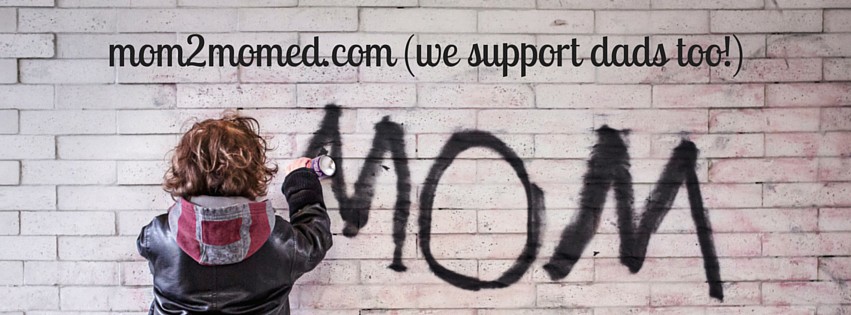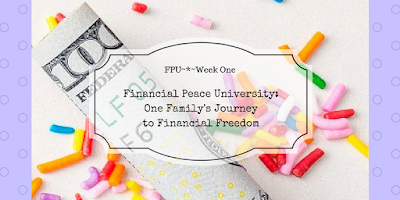I just do--reading is my favorite activity. It is what I would do all day, every day, without fail if I didn't have other obligations.
I grew up in a family of readers and have always had an affinity for books. I was lucky enough to have a librarian for a grandmother, and some of my happiest memories were receiving huge boxes of books that the library had pulled from circulation. Sometimes they were still in excellent condition. Sometimes they were all but falling apart. Regardless of their condition, I loved them all.
I still remember several books from those boxes--and I still have a few of them as well! There's the well read, slightly tattered Peanuts Lunch Bag Cook Book and a well loved copy of What Do You Do, Dear? There were many Eric Carle books (you know, the guy that wrote The Very Hungry Caterpillar). I received my first Nancy Drew and Hardy Boys books in these boxes.
I loved them all.
As a professional educator and private tutor, and a lover of books and reading, it pains me to see a child who struggles to read, or worse, to hear a child say they don't like to read. It also pains me to hear other educators and literacy advocates insisting on one and only one method of reading instruction--regardless of what type of instruction (more about this in a future post).
I previously shared five tips to help encourage your children to read in THIS post. Today, I have five more suggestions for you!
1. Don't insist on perfection
Do you like it when someone stands over you and watches for, and points out, every single mistake?
No? Are you sure?
Well, guess what--your kids don't like (or need) it either.
A sure fire way to turn a child off to learning is to be too rigid, focusing on every single little detail as they read. It is perfectly normal for ALL readers to miss an occasional word, be slightly off in pronouncing a word, and so on.
Let reading be enjoyable and an activity to be excited about, even if your child can't read perfectly. Sometimes mistakes lead to self-correction. Sometimes mistakes lead to conversation. Sometimes they don't even notice the mistake.
Pointing out every single little mistake, every single time your child reads will take away any possible joy. It also will cause your child to lose sight of the plot, characters, and other details of what they are reading. It likely will also create unnecessary anxiety.
That said...if you notice your child repeatedly making mistakes, making so many mistakes that their reading makes no sense, or making mistakes that radically change the meaning of what they are reading, start paying attention--if they keep doing it, your child may need some reading help.
2. Read to the dogs (or cats or hamsters or goldfish or potted plants)
Check with your local library to see if they have any "read to the dogs" or similar activities. Or, have your children read to pets you may have at home.
One of the sweetest little girls I have ever tutored had significant anxiety reading aloud. She would read aloud with me, but not with most other adults (not even with her mom!) outside of school. I suggested to her parents that they allow her to read to their dogs. She loved the snuggle time with her dogs and the dogs loved the attention! Over time, reading to her dogs aloud helped her to overcome some of her reading anxiety, and eventually she was able to start reading aloud to her parents and siblings.
Don't hover. Don't read along. Don't correct.
Let your child read aloud to the pets, or even to a house plant, without interruption. The goal is simply to get them reading and then to get them comfortable with reading.
You can work on specific skills like pronunciation, speed, fluency, and so on separately.
3. Let them see YOU reading
You've probably heard this before, but if you want your children to read, they NEED NEED NEED to see you reading too! I can't stress this enough! There is ample evidence that children need to see their parents reading.
Read the newspaper in the morning.
Read a novel while you relax in the evening.
Read on a Kindle or other e-reader.
You don't need to point out your reading--"Hey kids, look at me! I'm reading!"--just make it a natural part of your day.
Even if you don't really enjoy reading yourself (first, figure out why that is! I bet it's actually ingrained in your childhood), find a book that you think you might like (or at least tolerate if reading isn't your thing), and make it a point to read a little bit every day and in your child's presence. If you don't really enjoy reading, try just a few pages a day.
Just be sure you are reading in your child's presence so the act of reading is normal for your children.
4. Easy is sometimes OK
If your child doesn't have some EASY reading experiences, you might as well write off reading confidence. Sometimes it is perfectly and completely OK for your child to read material that is "too easy" on occasion.
When my tutoring students struggle with their school reading material, I let them choose some pleasure reading that is several levels easier. Even if they only read this easy material for a few minutes per day, knowing that they have read something with ease may help boost their confidence.
Occasional easy reading material helps children to also practice skills so that they become second nature. Once they have really developed early reading skills, they can then build other skills.
If your fourth grader is struggling to read A Wrinkle in Time by Madeline L'Engle for a school assignment (one of my favorite books, by the way), let them spend a few minutes reading a Judy Moody book by Megan McDonald or a Ramona Quimby book by Beverly Cleary.
If your first grader is struggling with Frog and Toad Are Friends by Arnold Lobel, let them try Cat the Cat by Mo Willems. If Cat the Cat is too much, don't be afraid to let your child enjoy picture books before tackling Frog and Toad Are Friends!
The goal is to build confidence. Your child should be challenged periodically with harder material, but if the reading material is too hard all the time, your child will grow discouraged and just give up.
5. Take turns
You know what your children are likely to enjoy a whole lot? And you too?
Reading TOGETHER. I don't care how old your child is--reading together can be great fun and a wonderful bonding experience for your entire family. Although I suggested in my last reading tips post that you hold a read-a-palooza and spend time reading together, I also want you to take turns reading aloud to each other.
While you can read almost anything together, taking turns is especially ideal for struggling readers, readers who tire easily, or kids who have reading assignments that are a little too challenging for comfort.
Depending on your child's age, attention span, and skill level, consider alternating paragraphs, pages, or even chapters.
If your child is in school and has to keep a reading log, the teacher may not like this, but I believe that taking turns still counts towards school reading logs. If you read 10 pages together, alternating pages, write down 10 pages on the log--not just the half that your child read.
As you are taking turns reading, be sure to ask your child questions as you read. Some of my favorites are:
- What do you think will happen next?
- How do you think {character} felt when {event in the story} happened?
- What would you do next if you were in this story?
- Does this seem realistic?
Go out and pick up the books mentioned in this post at your local library (and be sure to find out if they have any read-to-the-dogs events!) or buy them on Amazon below:
- Peanuts Lunch Bag Cook Book by June Dutton and Charles M. Shulz
- What Do You Do, Dear? by Sesyle Joslin
- The Very Hungry Caterpillar by Eric Carle
- Nancy Drew series by Carolyn Keene
- The Hardy Boys series by Franklin W. Dixon and Scott Burroughs
- A Wrinkle in Time by Madeline L'Engle
- Judy Moody series by Meg McDonald
- Ramona Quimby books by Beverly Cleary
- Frog and Toad are Friends by Arnold Lobel
- Cat the Cat series by Mo Willems
Be sure to come back on Tuesday for Part 5 of our book club reading of The Trouble with Boys by Peg Tyre! We'll be tackling topics including boys and literacy! Don't miss it!
If you don't have refrigerator alphabet magnets, and aren't sure where to buy them, we've pulled together links to four of the top sets on Amazon below!
This post contains affiliate links.











